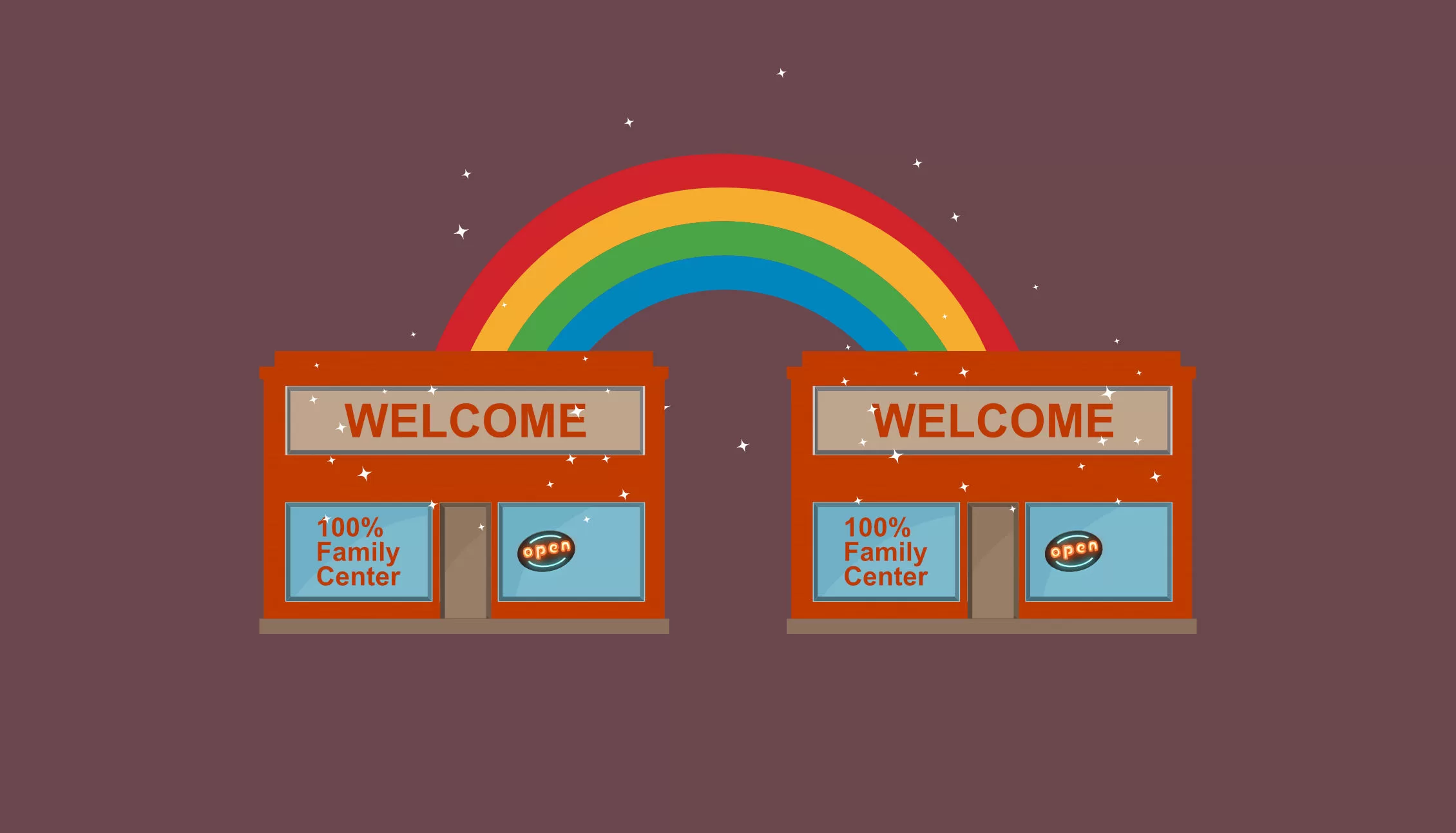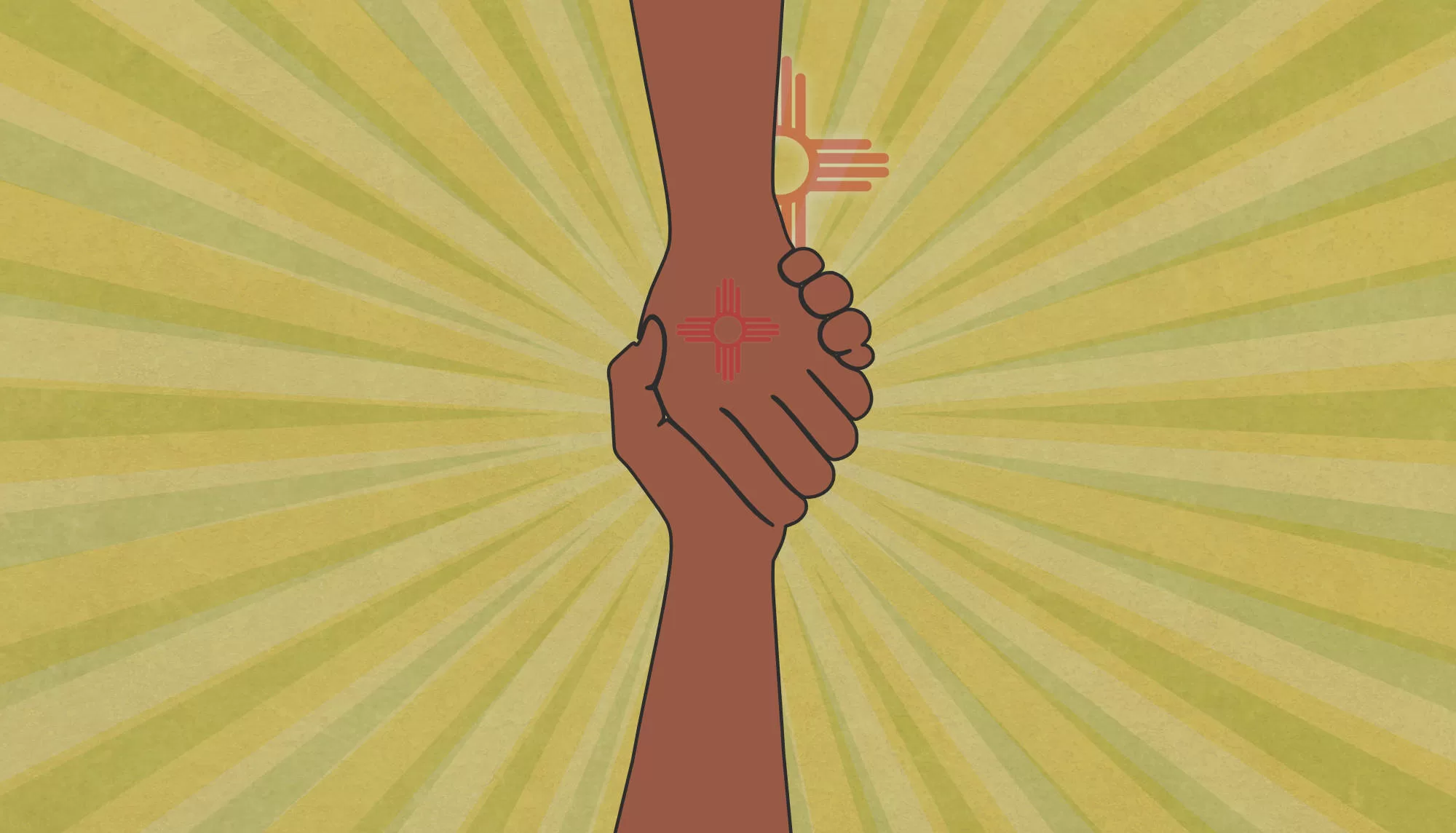100% Valencia’s Initiative Superpowers
We asked Ginny Adame, member of the County Wellness Council, how the 100% New Mexico initiative is helping them get to positive health outcomes.
Question: What brought you to the 100% Valencia initiative?
Ginny Adame: The Community Wellness Council (CWC) started off with Anna Age Eight, reading the book and collaborating with our community focusing initially on reducing child abuse and violence. There was some forward momentum with these efforts; however, we really didn’t have the structure in place.
Once the 100% Community book came out, our health council read the book via a book club format and ended up officially adopting the 100% New Mexico initiative as the way our health council would address our priorities, which are substance misuse prevention, violence prevention, increasing access to medical and behavioral health, along with healthy eating and active living. We embraced the structure that the 100% Community book provided and thought it would be a great fit for our community.
Question: How does your work with the DWI program, the health council, and 100% New Mexico align?
Ginny Adame: The 100% New Mexico initiative, titled 100% Valencia, works very well with our health council priorities identified above. CWC is now in their assessment phase, and we are actively seeking community input to identify priorities for our next 3-5 year action plan/strategic plan. Regardless of what the community identifies as their top priorities to focus on, those priorities will fit within the current structure of our 100% New Mexico initiative framework and the evaluation and quality improvement work that is built into that framework.
Question: Your health council members read both Anna, Age Eight and 100% Community in order to explore the potential for implementing the initiative. What role does the council have in the 100% Valencia initiative today?
Ginny Adame: Our health council adopted the 100% New Mexico initiative and we have developed policy and procedures for the 100% Valencia Core/Health Equity team that oversees the work of each of the ten action teams. The health council is the umbrella over the core team, and the action teams, and the work that is done via the 100% Valencia initiative. Each of the ten action teams meet monthly and the core team meets once a month as well with each of the action team chairs to keep everyone connected and updated on the shared work and shared mission.
The health council has, and is, working with NMSU’s Anna, Age Eight Institute to conduct our second 100% New Mexico survey. With the first survey we were able to get a great response, but we were not as successful reaching the more rural areas of our community and capturing the voices of those who are not always heard. We really want our survey to reflect demographically and culturally our diverse population in Valencia County. We want to ensure that our survey of residents represents our most vulnerable populations. We are using the survey data that identified barriers to vital services to drive our efforts. We are awaiting our successful second round of survey data to move our efforts in the viewscreen of our county and municipal leaders.
Question: What are the benefits of sharing insights on Anna, Age Eight in a book club format with stakeholders and service providers?
Ginny Adame: I think the Anna, Age Eight Institute really helps frame the issues of systems that fall short of protecting our youngest and most vulnerable members of our society and it also helps one understand what parents face that might jeopardize their own and their child’s safety and well-being. The book provides a lens to see the root causes of challenges and provide solutions for how to make real changes that are so desperately needed to ensure the well-being of 100% of us.
Question: How did you recruit members for the ten action teams, each one focused on one of the surviving and thriving sectors?
Ginny Adame: Strangely, COVID helped us recruit for the 100% Valencia initiative. Because of COVID, our community was forced out of some of the silos that it had been working in. We had to come together to get our families food, and we came to an understanding of how many families relied on schools to help feed their children. We worked together with schools that had families outside their district that attended their schools and vice versa. There became the realization that we would all have to work together during the unprecedented challenges. This helped change mindsets and opened people to the many benefits of combining resources. 100% Valencia made so much sense to everyone, especially amid COVID.
CWC adopted the 100% New Mexico Initiative, created our Core Team, created policies and procedures (necessary structure for how everything will function in community), and worked with NMSU Anna Age Eight Institute for the technical assistance to include getting our 100% survey launched. We did important groundwork to support the process of recruiting and building each of the 100% action teams.
We felt having a solid base and structure in place before recruiting was important which helped us ultimately build momentum because we spent less time having to figure out logistics and could focus more time on onboarding community members instead. We reached out to those we knew who were already working in the ten vital areas and identified chairs for as many action teams as we could and then, in turn, the chairs identified community members/partners they knew.
The idea was not for CWC to run every action team, but to support the community in their work and in following the structure of the 100% New Mexico initiative. At our best, we have had between three and ten people attend each action team and Chairs for six of the ten. One of the essential pieces for this whole process is that CWC was able to receive funds to support a part-time coordinator for 100% Valencia. That coordinator is key for logistics and getting meetings running, agendas set, community events planned, and performing ongoing research for how to sustain our efforts through additional funds/grants.
Question: Your 100% team developed a family resource directory, which included an extensive process of calling all providers to confirm services. What did you learn from the process of speaking with representatives from all your county’s service agencies?
Ginny Adame: CWC really embraced the idea of vetting service providers to ensure that when our community members visited a service listed on 100% Family Services Directory, that they, whomever they were and from whatever background they represented, would be treated with dignity and respect. We developed an extensive vetting sheet for providers, using our ten action teams who then made the calls to assess their capacity to serve residents. We rated the service providers for inclusion on the resource directory. We have launched a new resource directory to all community services, and are currently working on a second directory for ten vital services.
As one of the callers of the behavioral health sector, I was a bit surprised at how I was handled with them, especially knowing I was vetting resources for our directory. If I was someone in need of mental health services and had received the treatment I encountered on my calls on a number of occasions, I fear my crisis would be worse afterward.
Question: Your survey of parents revealed barriers to ten services. Which services are a priority for your county, in terms of increasing access?
Ginny Adame: ALL of the services are a priority in our county. We know that it is obvious to focus on those resources that are survival resources because just based on the Maslow’s hierarchy of needs, one can’t focus on much else without the most basic needs being met, but we also realize that all ten sectors are important to the overall picture of health and wellness for our community members.
In Valencia County, with about 88,000 residents, we still don’t have a hospital. We lack both medical and behavioral health providers. In some areas of our community, it could be over a 30-minute drive to Albuquerque for most specialty care. Unless one works with a midwife, birthing options are 20 to 30 minutes away… if you have your own transportation. If you don’t, your option would be family and friends or the ambulance.
There are no homeless shelters in Valencia County and we are seeing more and more people, including our youth, who are experiencing homelessness. These are the types of challenges our community faces which we know can be addressed by having all ten sectors available to 100% of our community members. This is what truly drives our work.
Question: Fully resourced community schools have been shown to create a one-stop service hub for parents, where they can access vital services. What do local stakeholders think about the model?
Ginny Adame: There needs to be more capacity and readiness built around the understanding of how important and vital community schools can be to support our families and youth. There was a school-based health center in Belen which really provided a lot of services and had a very high rate of utilization, especially for mental health services, and that eventually was unfunded. There is interest within some of the local schools to get the community school model implemented, but there is still a way to go to this end. Educating people about the many benefits of community schools and school-based health centers hopefully will build the necessary capacity and readiness for more steps forward.
Question: Of all the organizations in your county, which one serves as a family service center, where all families can find support to link to services such as healthcare, food, and housing security programs?
Ginny Adame: There are a number of providers that have some great services for families and youth, but as of today, there really isn’t a one-stop shop for all the services you identified above. I know that Rocket Teen Center in Belen is doing its best to get close to the model you mention. It is just starting to provide service and work on the space it has and hopefully it will become the model for many more sites like it throughout our county where access to transportation to get to that center is an issue.
Question: What resources (additional staffing, etc) would support your 100% team in creating a countywide system of care, where 100% of residents had access to ten vital services?
Ginny Adame: Funding is always the biggest issue. For 100% Valencia to be fully supported it requires full-time staff to work on all the many facets of this very worthy initiative that ultimately serves an entire community. As one can imagine, to make this vision a reality in a sustainable way, funding is needed. The benefits in increased safety, health, and well-being that would be achieved would definitely make the funds needed to make 100% New Mexico initiative work a major bargain! What would one pay to have 100% of its community members accessing all the services they need to survive and then thrive?
Think of the costs of not having 100% Valencia in place. The impacts of those that can’t access the services they need are sometimes visible and sometimes not, but they are devastating either way to so many. Our most vulnerable populations are impacted in a disproportionate way. With vital services in place, we are moving upstream to prevent problems like child maltreatment and substance use disorders, before they begin. It makes good financial sense and supports our collective quality of life.
Question: What support do you have for the mission of 100% Valencia from local government and elected leaders?
Ginny Adame: I think there is buy-in and there will be growing buy-in once our final survey results are in and presented, informing our leaders of their community’s needs. Selling the idea that we need all ten sectors working together hasn’t been a hard sell or hard to understand. The how is where the real marketing of the “100% concept” must be done.
Question: What do you enjoy most about the work?
Ginny Adame: I have a great passion for serving my community. I believe that the community can come together and do great things. 100% New Mexico provides such a holistic vision of what a community needs to be healthy, safe, and well in all ways, and it is based upon research and evidence-based practices, evaluation, and constant measures of quality improvement needed to support sustainability and results.
Mission: The 100% New Mexico initiative is dedicated to ensuring that 100% of families can access ten vital services crucial for their overall health, resilience, and success. This university-sponsored endeavor necessitates the local implementation of evidence-based strategies encompassing both community and school-based service hubs, aiming to prevent the most pressing and costly public health and safety challenges, including adverse social determinants of health and adverse childhood experiences.
Don’t miss a blog post! Get notified!
The 100% New Mexico initiative is a program of the Anna, Age Eight Institute at New Mexico State University, College of Agricultural, Consumer and Environmental Sciences, Cooperative Extension Service. Contact: annaageeight@nmsu.edu or visit annaageeight.nmsu.edu to learn more.





